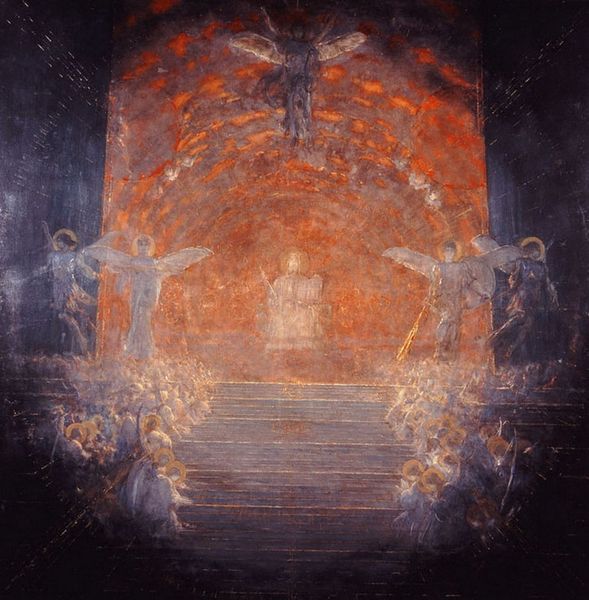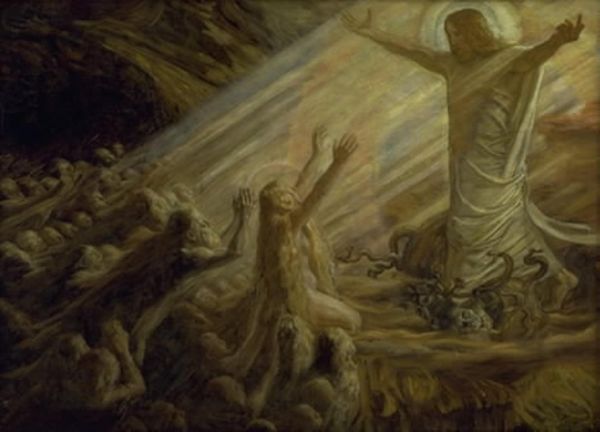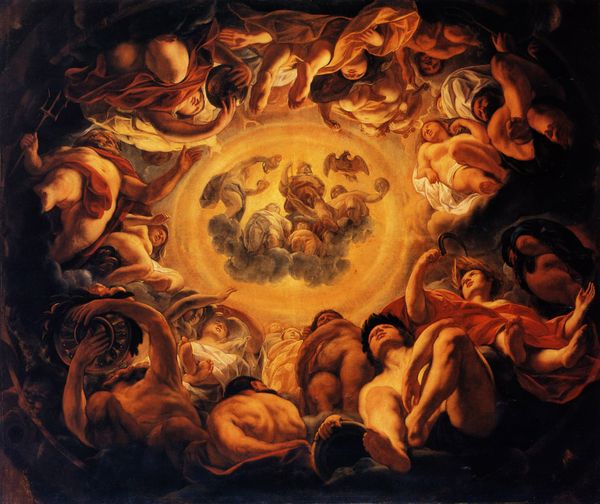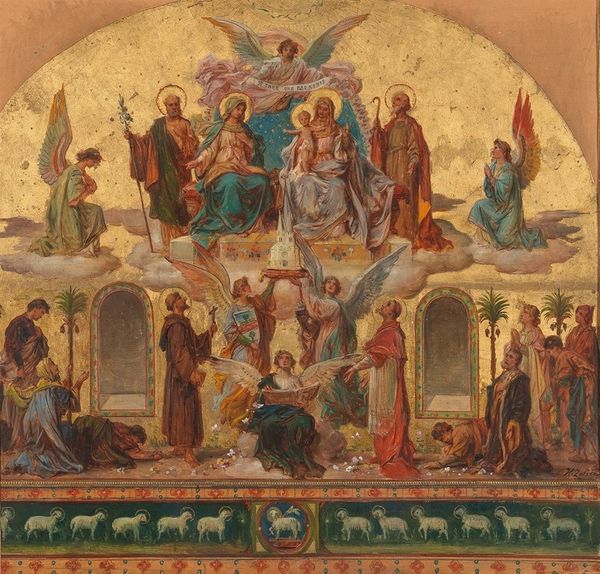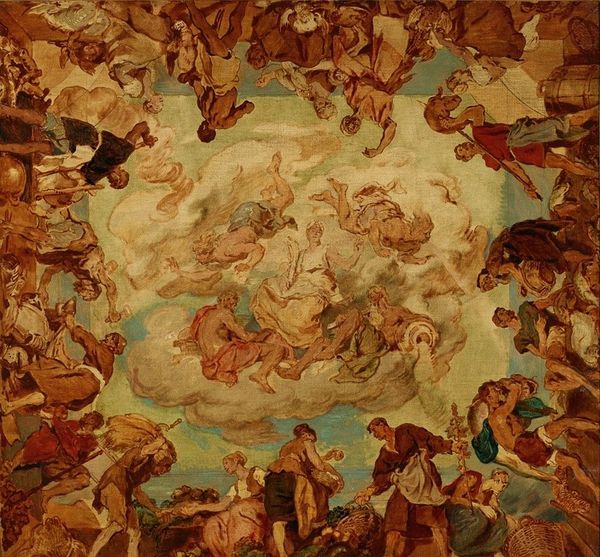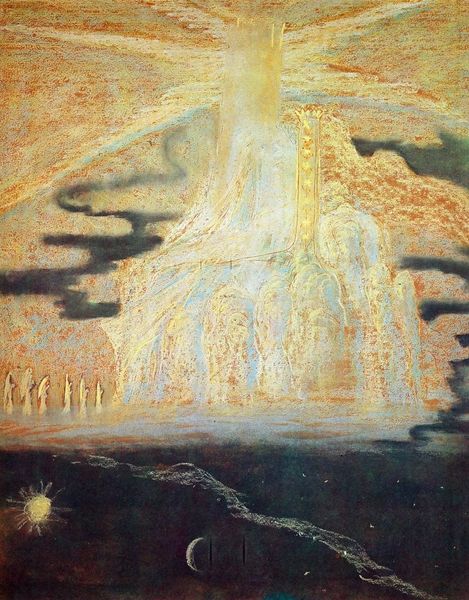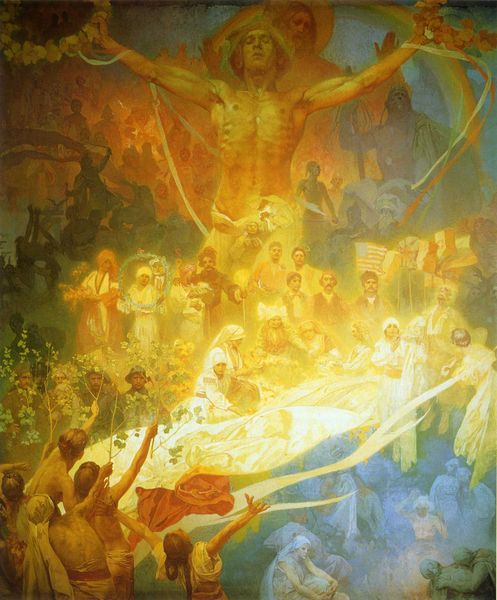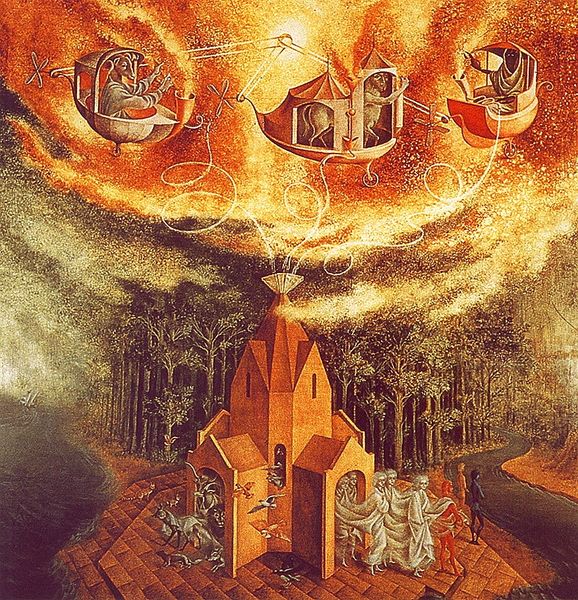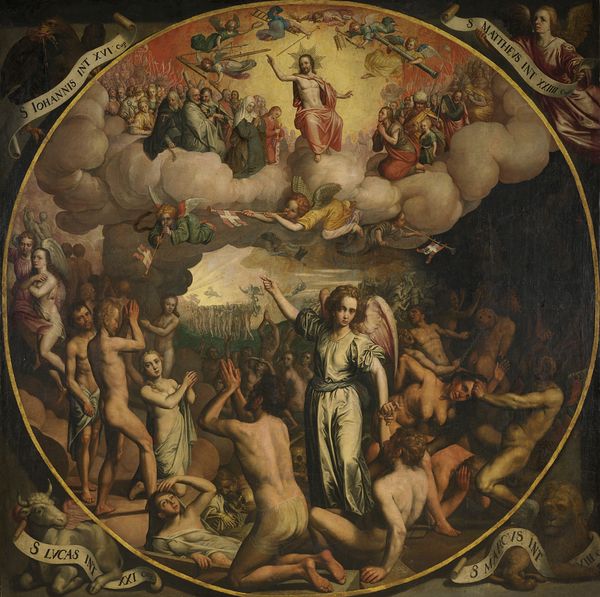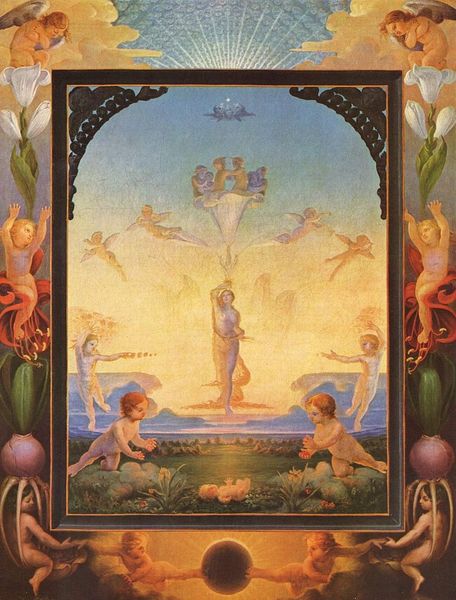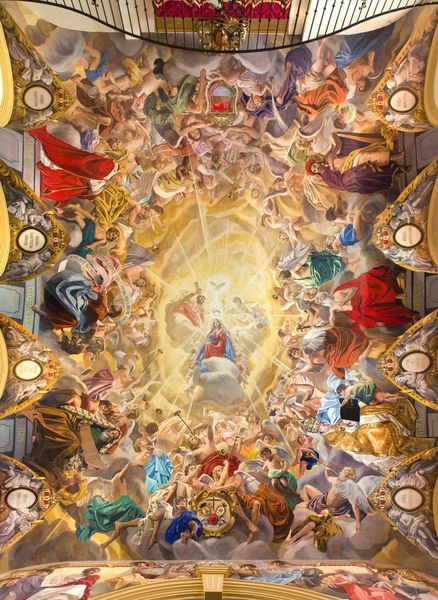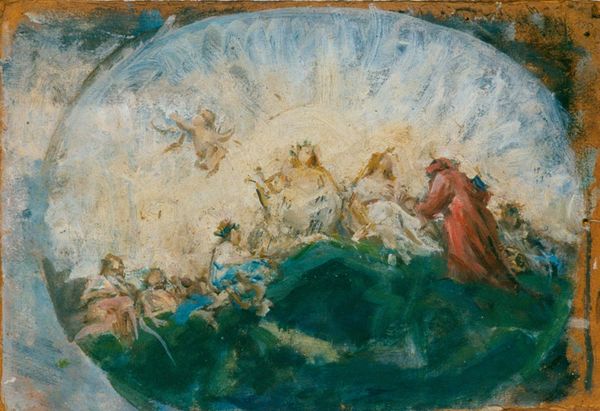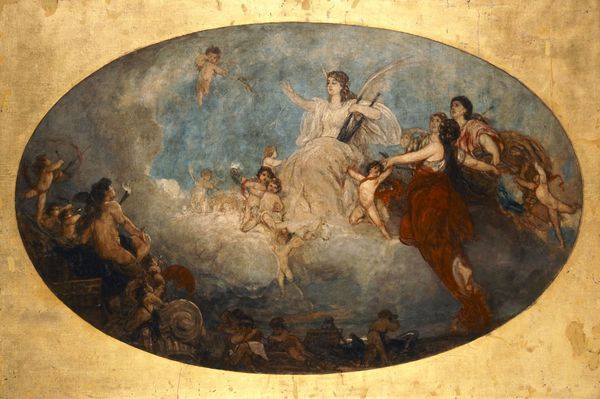
tempera, painting, oil-paint, watercolor
#
water colours
#
allegory
#
narrative-art
#
tempera
#
painting
#
oil-paint
#
landscape
#
perspective
#
figuration
#
oil painting
#
watercolor
#
romanticism
#
chiaroscuro
#
history-painting
#
academic-art
#
watercolor
Copyright: Public domain
Editor: We’re looking at Domingos Sequeira’s “Coronation of the Virgin,” painted around 1830, using tempera and oil. It strikes me as a really busy composition, a multitude of figures in what looks like a heavenly setting. How do you interpret this work, especially considering the context of its creation? Curator: This piece vibrates with the social and political upheavals of the 19th century. Consider Sequeira’s personal history. He was working during a period of intense religious and political debate in Portugal. The Coronation itself is rife with power dynamics; who is doing the crowning, and what does that signify about earthly versus divine authority? Editor: So, the act of crowning isn't just a religious symbol, it's also about secular power? Curator: Precisely! Look at how the figures are arranged. Do you notice any specific groupings or separations? Who seems to have access to the Virgin, and who is further removed? This composition isn't neutral; it likely reflects social hierarchies and perhaps even a critique of the Church’s role in maintaining those structures. What impact would this piece have on people facing social or racial inequality in their everyday lives? Editor: It’s almost like he's questioning the established order through religious imagery. I hadn’t considered it in light of political structures at all! Curator: Exactly. And what does the gender of the figure being crowned say about the role of women, power, and representation during that time? We have to acknowledge art's role in perpetuating certain ideologies, but also its potential for subversion. Editor: I’m definitely seeing it differently now, recognizing how it’s tangled with history, gender, and power. Curator: I agree, situating artworks within these wider narratives allows us to better interrogate both our history and our present.
Comments
No comments
Be the first to comment and join the conversation on the ultimate creative platform.
